Volunteering and giving something back is something that many travellers like to incorporate into their travels abroad but how beneficial actually is volun tourism? Can you really make a difference by volunteering for a few weeks and with such high program fees does the money paid benefited the project appropriately?
This week I’ve been talking to Lianne from the UK. She recently spent 2 weeks volunteering on a turtle conversation project in Sri Lanka and I wanted to ask her what it was like and find out about the positive and negative aspects of voluntourism.
Thanks for talking to me Lianne. So you recently spent time volunteering in Sri Lanka. What made you want to go and do this project?
I wanted a break from work and I believe in the philosophy that “the antidote to exhaustion is not rest but wholeheartedness” – David Whyte. I wanted to feel alive, to do something I believed in, to be somewhere beautiful and take myself out of my rather busy head and into my body. I wanted to sleep heavily and eat well, to come back fitter and having had a psychological and emotional break. As I would be away for 4 weeks over the Christmas and New Year, my liver also thought it might be a good idea!
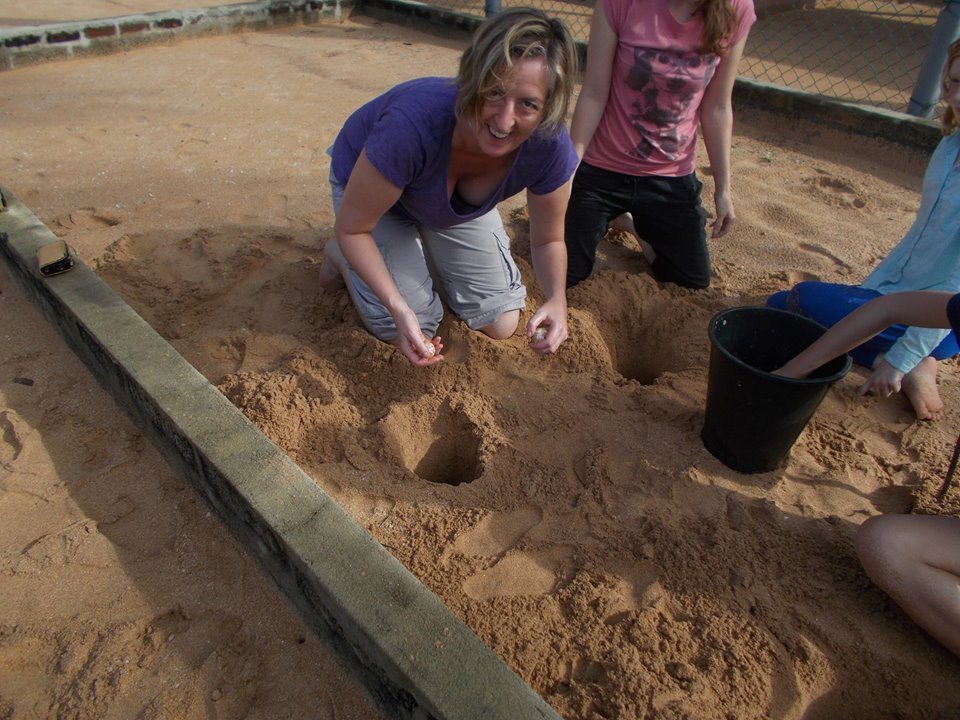
My reasons for the turtles. I have to admit that initially I wanted to work with elephants as I feel so strongly about their demise and support some charities in their work to prevent poaching and the destruction of their habitat. I was considering the elephant orphanage in Sri Lanka but, as part of my research, came across negative reports from reputable sources. The orphanage is run by the government and little of the money goes to the elephants. They are also herded into very small compounds at night and too readily chained.
So I looked at what other projects existed on the Island. I started to read about the survival rate of hatchlings (how low it is!) and the black market in selling eggs for eating purposes. They are remarkable creatures that are still quite a mystery to us in terms of how they navigate thousands and thousands of miles and then return to the beach on which they were born. So I became hooked and decided to travel to Sri Lanka to help the turtles!

What was your role while volunteering in Sri Lanka ?
I went to Sri Lanka to volunteer on a sea turtle conservation project. Sadly, only a few baby turtles from each batch ever make it to adulthood so the eggs are collected and rescued so they can hatch safely away from predators, before being released into the sea at night-time to try and increase their chances of survival.
Volunteers help with all aspects of the daily care and preservation of the four species of turtles that live at the centre (green, olive ridley, loggerhead and hawksbill) We helped with feeding turtles, cleaning and constructing the hatcheries, looking after the nesting site, caring for the turtle eggs and releasing the hatchling. We also taught English to the local community and showed tourists around the center.
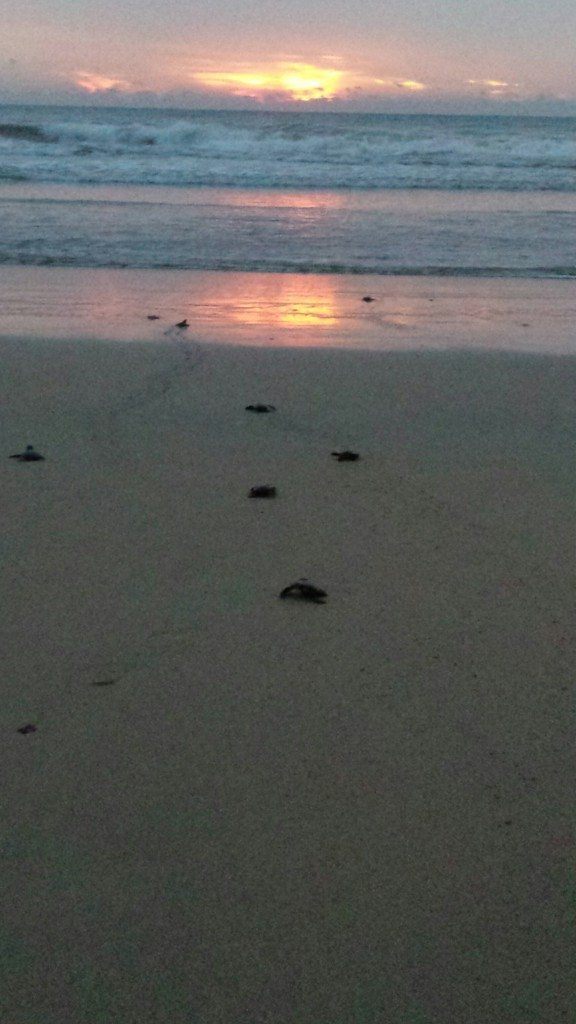
Please describe a typical day volunteering with turtles in Sri Lanka …
I shared a bedroom in the volunteer’s house (with one other person). I would emerge from under my mosquito net rather grumpily for breakfast at 8. We had fresh pineapple, tiny sweet bananas and bread. The Chinese volunteers had a penchant for Nuttella and so that became a staple as well.
Then we’d walk a few meters over the road to the hatchery and await instructions. The paid worker, a Sri Lankan, finely chopped up tuna with a machete. Crows hovered on the roof waiting to get lucky.
We carried the turtles to special feeding tanks for their tuna. Doing so prevented their own tanks from getting too dirty but I was concerned that we handled them too frequently.
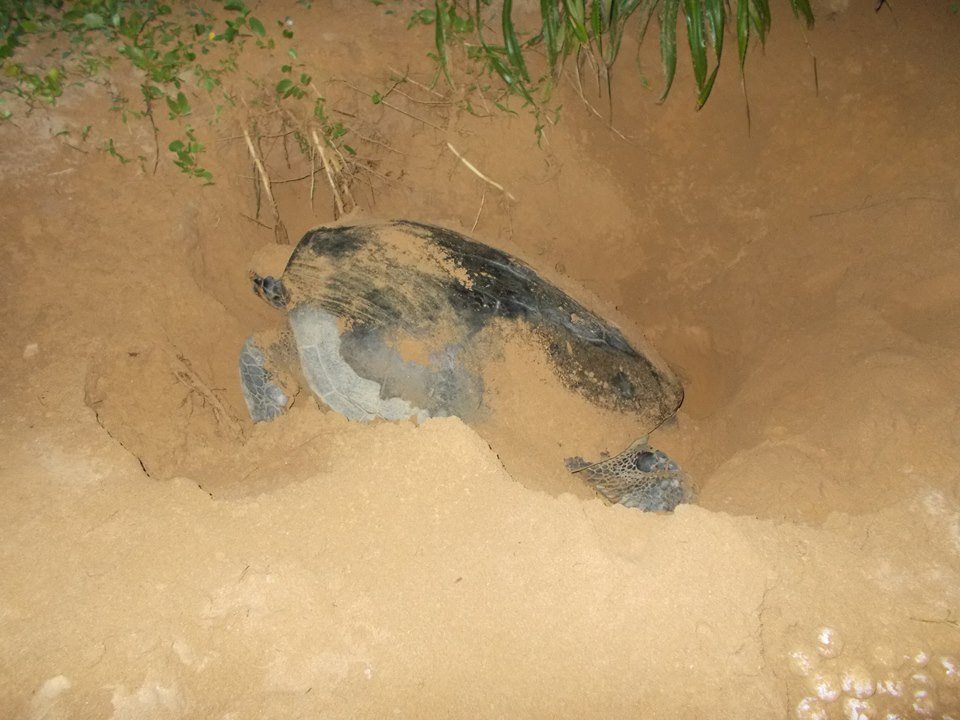
Every three days the turtle’s tanks were emptied, the turtles shells scrubbed with sand to get algae off (in the wild small fish perform this task). The concrete tanks scrubbed by hand with very ineffective hand brushes and brooms. This took about two hours and was pretty hard work. As tourists arrived, we would take it in turns to show them around, providing explanations of the types of turtles and history of the hatchery.
There were about ten turtles at the hatchery who had been kept from birth for education purposes. Most of these would be released when they reached two to three years old, but one of the turtles had a shell deformity and another was albino- these two were destined to remain in these large concrete tanks. A rather sad existence – I wondered whether there would be a sealife centre somewhere that would take them and provide a more interesting environment for the turtles to spend the rest of their days.
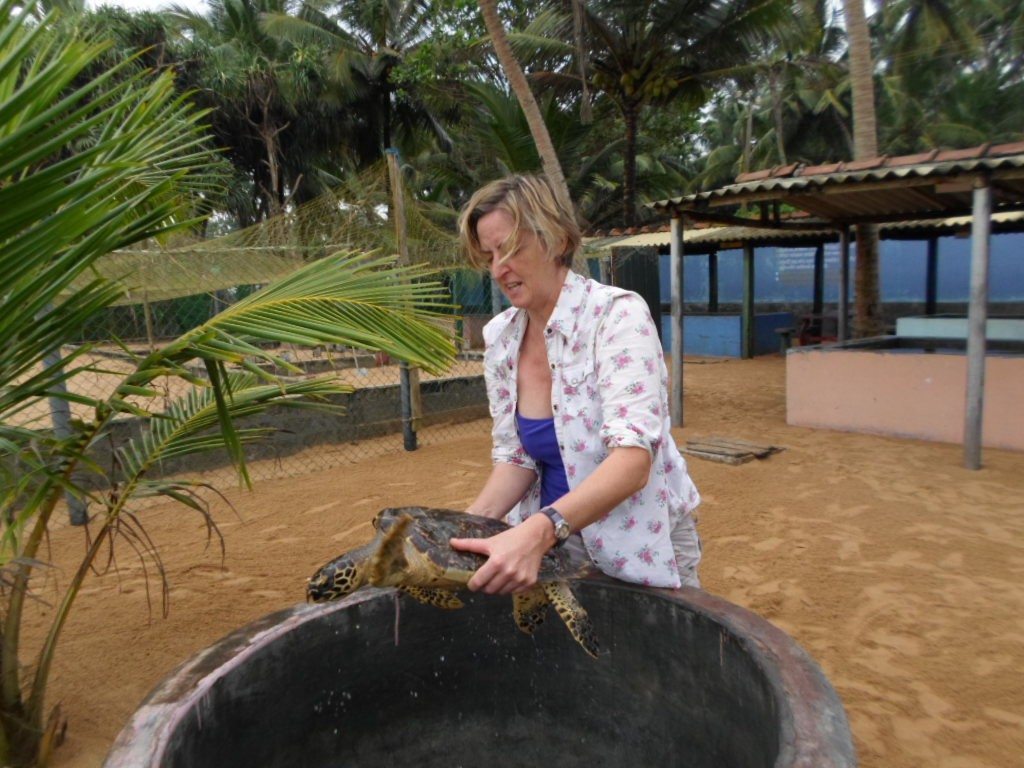
Every few days new eggs would arrive, bought from someone who otherwise would have sold them on the black market for food. We would take the eggs (which looked like ping pong balls but soft to the touch) to sand beds where we would dig a hole which replicated that dug by the female turtle when laying her eggs. We would bury them, cover over with sand and leave until they hatched two to three weeks later.
When hatched, we would place the hatchlings in a special tank where they would stay until released into the sea. For the first 24 hours they would paddle furiously, programmed to swim as fast as they could to get away from the coast where most predators lay in wait. A couple of days later they gave up and bobbed on the surface of the tank for tourists to look at and, unfortunately handle. Tourists could pay money to release a hatchling so every week some would be released in the evening when there were less birds to prey on them as they walked towards the ocean. Their little heads bobbing in the ocean looked so vulnerable.
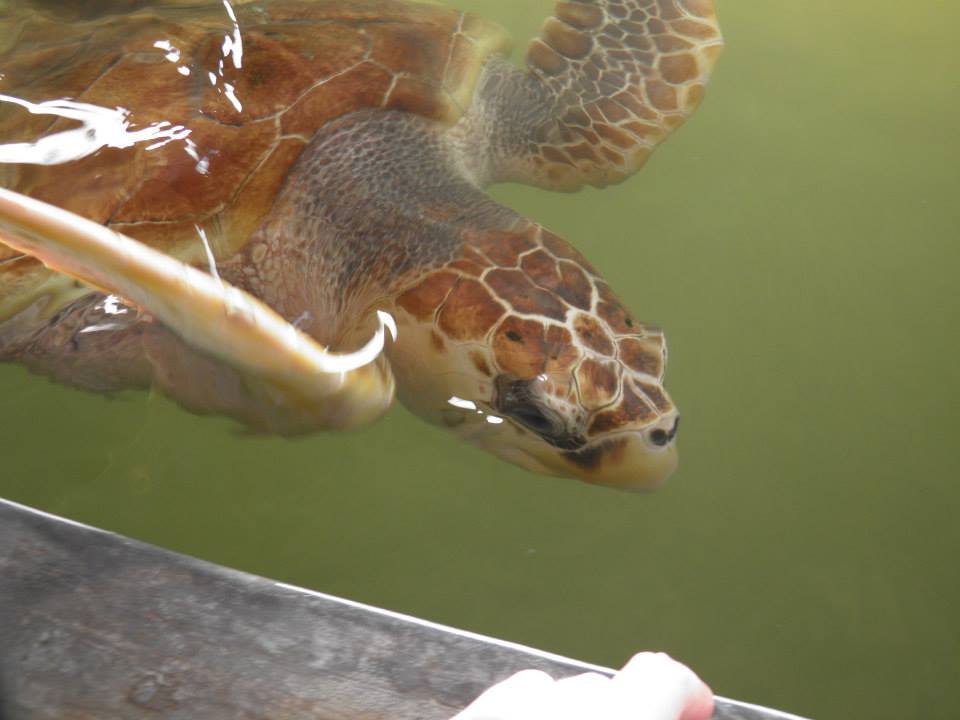
The afternoon consisted of cleaning the beach of plastic washed up from the night before. Primarily green plastic bottle tops and ice-cream spoons. Two afternoons a week we travelled by bus to a local temple where we would teach English and basic math to local children. The resources we had were rather poor and there were no lesson plans so it was a bit anxiety provoking. However, the children were lovely and their parents seemed so appreciative.
An evening meal was served at about 6.30 and then we would be locked into the volunteer compound for the evening.
Weekends were free for our own leisure. I went swimming at a coral reef, whale watching and exploring this beautiful island.
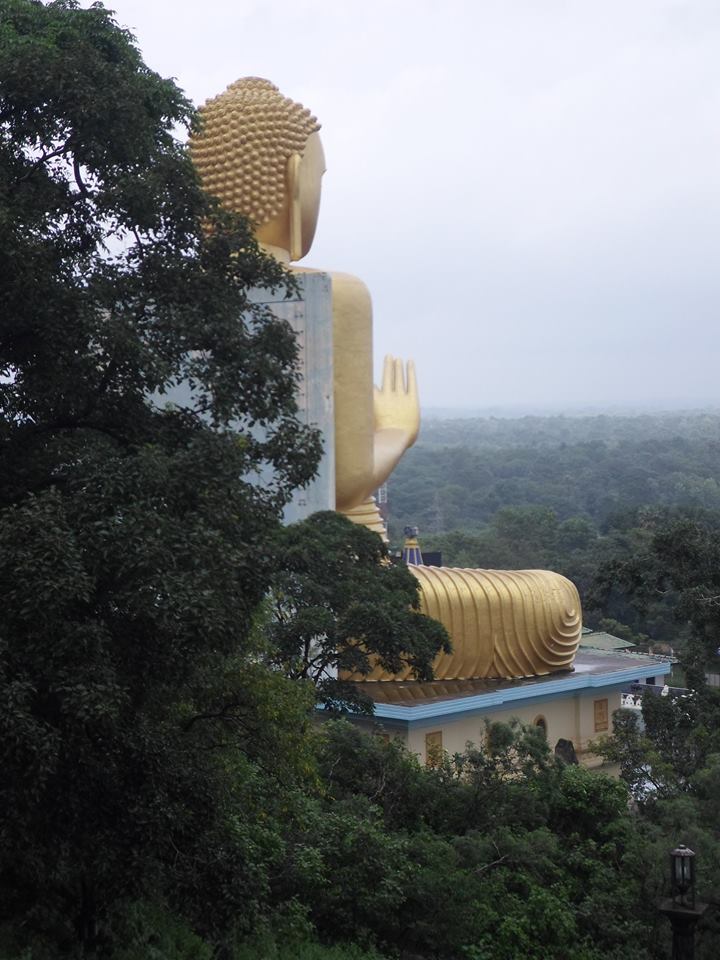
Sounds busy, how did you arrange this volunteering? Did you go through an organised program and did you have to pay?
I went through an organised programme through Great Projects and paid £800 for two weeks which included accommodation and food in a volunteer house.
Ok, so what did you like the best about volunteering in Sri Lanka?
I liked being somewhere beautiful and having the opportunity to travel on the weekends and afterward the project. Sri Lanka is relatively small so it feels feasible to see quite a lot in a short space of time.

Do you have one standout highlight or biggest achievement from your time volunteering in Sri Lanka?
Watching a Green turtle lay her eggs at night. She would dig, rest, sigh and continue digging again, oblivious to our watching and thankfully unaware that a man was collecting her eggs as soon as she was laying them.
But nothings perfect right? Are there any downsides?
I experienced a deep ambivalence about the real value of the conservation work we were doing and was concerned that it may actually be having an adverse impact on wildlife.
There were many aspects of the project which were great; the family and staff were welcoming and went out of their way to make Christmas special for us, the food was excellent and the accommodation was clean and comfortable. Some aspects of the project seemed worthwhile, for example, the cleaning of the beach and tanks.
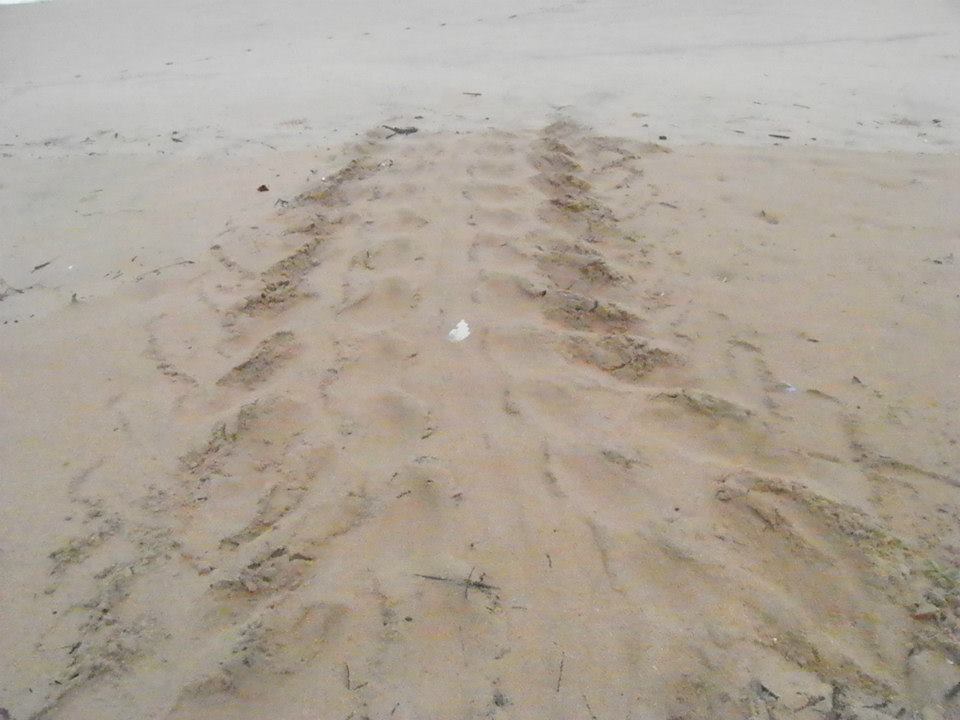
However there were other aspects of the project which left me with very mixed feelings. Whilst it seems necessary to buy, collect, re-bury and hatch the turtles to be released at night, the hatchlings were kept for about two weeks so that tourists could see (sometimes handle) and pay to release into the sea. During this time the hatchlings lost their instinctual response to paddle furiously to the sea (required to get them further out where there are fewer predators) and became rather placid.
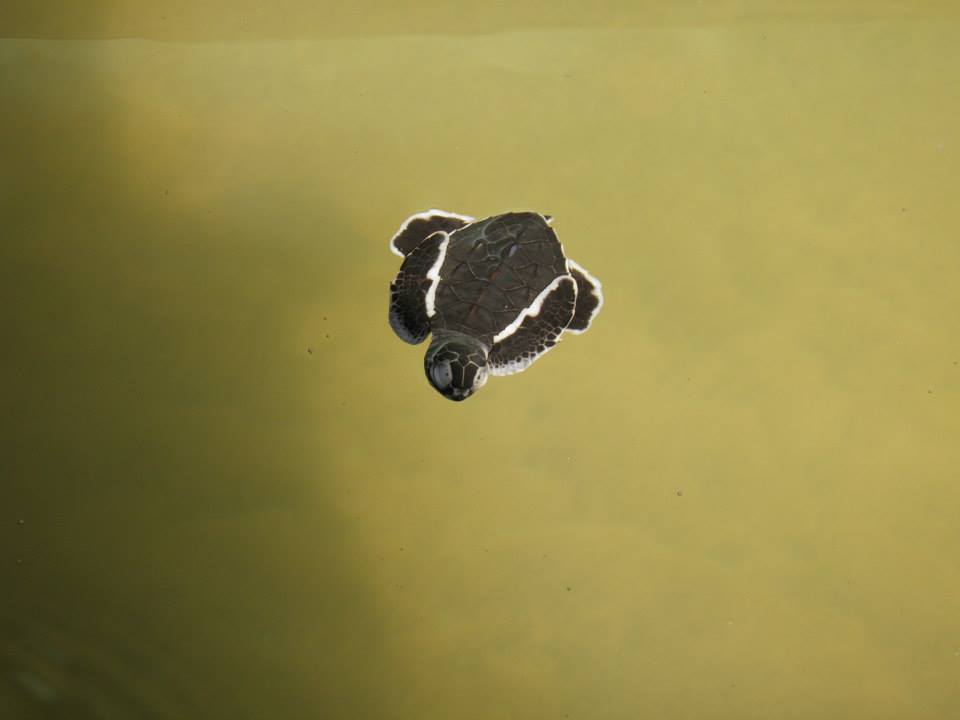
Also, despite signs not to handle the turtles (apart from the necessary moving of them into clean tanks) some volunteers did handle them and encouraged tourists to do so too and this wasn’t stopped by the staff. I understand that our bacteria is harmful to the turtles so I thought that handling should be kept to a minimum and gloves worn.
That’s worrying to hear. So based on your experience, what are your thoughts now on ‘volun-tourism?’ (Do you believe that you made a difference in the short time you spent there and that any money paid benefited the project appropriately?)
I still believe that we need to understand that, without such money from ‘volun tourists’, many projects would not exist. However, I am concerned that quite a few projects are created as business ventures and not with the conservation in mind.
I appreciate that I arrived with purist conservation principles and that in developing countries, conservation is invariably blended with the need to make money, not just for the project but for the owners. But the owner was obviously well off financially and we were concerned about how much of our money went to the project and how much went to him.
I am still left wondering if we were doing more harm than good…
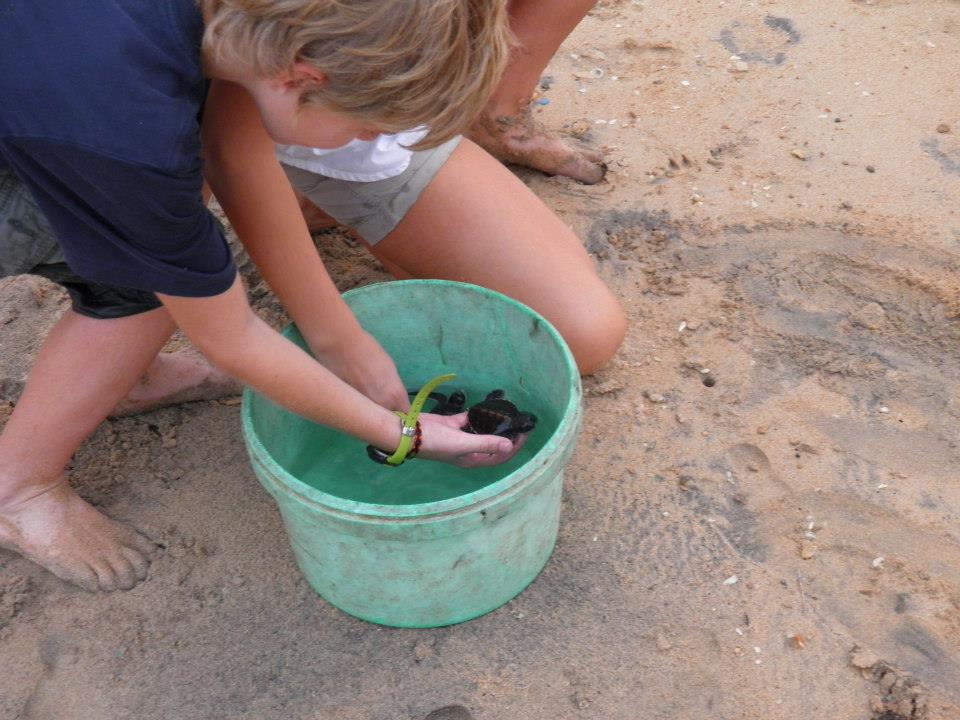
What do you wish you had known before you started volunteering in Sri Lanka?
In hindsight I discovered an academic report into the quality of hatcheries in Sri Lanka. If I had read this beforehand then I would have done something else, probably in another country.
No hatchery in Sri Lanka meets conservation standards and many questions have been raised as to the training and standards of those who are involved – see http://right-tourism.com/2013/12/sea-turtle-hatcheries-in-sri-lanka-research-paper/#sthash.DtMgBR9i.dpbs
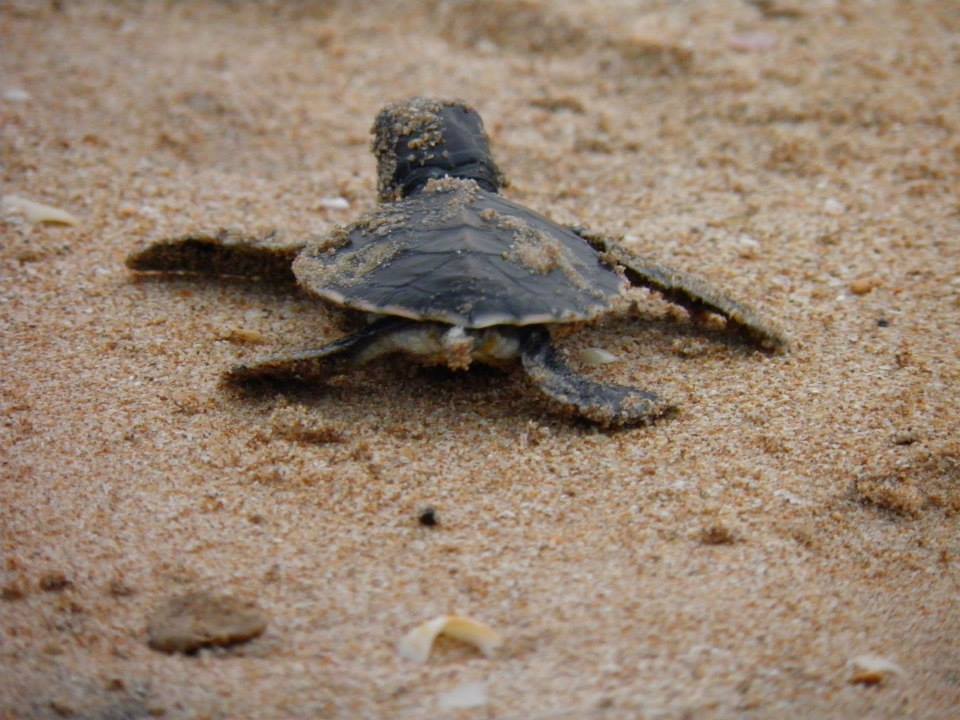
You raise some really good points that people need to be aware of when choosing a volunteering project. So what tips would you give for people wanting to follow in your footsteps and volunteer abroad?
I thought I had conducted quite a lot of research by reading other people’s posts. However, I realise now that many people enter and experience such programmes with very little thought and their posts are quite unreflective about the downsides of eco-tourism. I wish I had checked with a conservation charity to gain their perspective. There should be a quality mark awarded to organisations that thoroughly check the impact of projects.
While the volunteer experience is monitored, I’m not sure that the conservation work is of real value? I intend to volunteer again but want to way of checking that I am actually being of use and not having an adverse impact on wildlife.
Thanks Liane for sharing your experiences, I hope it can help other people who want to volunteer abroad.

3 comments
great blog! I had the pleasure of spending a week with Lianne at the project before she moved on and thoroughly enjoyed her company :-). Sadly my views of the project are identical to lianne’s. I feel we need to get to the route of the problem and approach the Sri Lankan government to change their laws. The country is by no means rich and this sadly is a problem. The owner of the hatchery is passionate, but he also sees a money making scheme with these turtles, if there are no babies in the tanks, the tourists won’t come. 2 months after Lianne and I left Sri Lanka, they were releasing 50 babies a day from the hatchery. Even if the tour operators made sure volunteers were there to help at high season, and closed the programme at low season I think this would help the turtles a great deal. It would mean a loss for the tour operator and the hatchery owner. The balance between conservation and tourism is so fine in Sri Lanka. Being a marine biology graduate I am extremely keen to compare this experience with one over on the west coast of South America. They can afford to block off beached for conservation and the turtles are their main priority. One day I will get there, and I’m taking Lianne with me 🙂 Josie xx
Hi Josie. Thanks for commenting and sharing your views. I do feel that some of these volunteering organisations are benefiting by making money out of the volunteers instead of the best interests of the project. Thanks for your insight it’s a difficult situation.
Thank you so much for this insightful interview – very helpful as I try to plan out a meaningful volunteer vacation with my eight year old son for next summer.